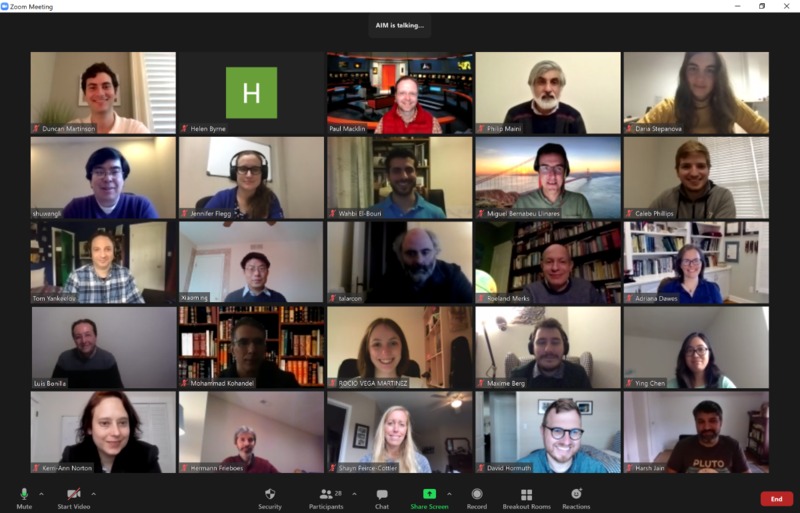
at the
American Institute of Mathematics, San Jose, California
organized by
Helen Byrne, Trachette Jackson, John Lowengrub, and Xiaoming Zheng
Mathematical modeling and simulation play an increasing prominent role in cancer research, serving as a tool for theoretical analysis and prediction of clinical trials. Simply put, cancer is uncontrolled tumor growth plus angiogenesis, the growth of new blood vessels. Angiogenesis is critical for tumor growth as it mediates nutrient delivery to tumor cells and facilitates invasion and metastasis. Anti-angiogenesis therapy has gradually become a standard of care since the first drug capable of inhibiting new blood vessel formation was approved in 2004. To date, the anti-angiogenesis strategy has evolved from starving the tumor by cutting off blood vessels to vascular normalization aiming to improve drug perfusion.
Recently, disrupting multiple signaling pathways, alone and in combination with immunotherapy and novel stem cell-targeted therapies, is the focus of new and emerging anti-angiogenic therapies. Surprisingly, there has been a paucity of new mathematical modeling along these lines. Furthermore, tumor angiogenesis and its interactions with tumor cells and micro-environment are multi-scale, multi-agent, multi-events, multi-phase, and multi-disciplinary. Although researchers have developed various mathematical models and simulation software, ranging from discrete, agent-based, continuum, to hybrid types, all these are in an adolescent stage comparing to the complexity of cancer therapy. This workshop will investigate the significant new advances in tumor angiogenesis and therapeutic directions.
The workshop schedule.